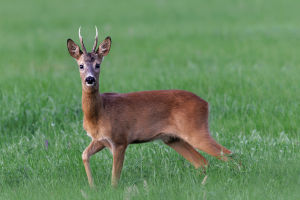Hello Lykkers! The brown-hooded parrot is a captivating bird native to the tropical regions of Central and South America, particularly found in the rain-forests and savannas of countries like Venezuela, Colombia, and Brazil.
With its vibrant plumage, engaging personality, and fascinating behaviors, the brown-hooded parrot is not only a striking representative of the parrot family but also an important species within its ecosystem.
Physical Characteristics
The brown-hooded parrot is medium-sized, typically measuring about 25 to 30 centimeters (10 to 12 inches) in length. Its most distinctive feature is its striking brown hood, which contrasts beautifully with the vibrant green body. The head is adorned with shades of dark brown, while the cheeks and throat are a brighter yellowish hue, adding to its visual appeal.
Habitat and Distribution
The brown-hooded parrot is primarily found in humid tropical forests, but it can also adapt to open areas, such as savannas and woodlands. This adaptability allows it to thrive in various environments, although it prefers areas with abundant fruiting trees, which are crucial for its diet.
Diet and Feeding Habits
The brown-hooded parrot primarily feeds on a diet of seeds, fruits, berries, and nuts. In the wild, they have been observed eating a variety of fruits, including guava, mango, and figs, which provide essential nutrients and energy. Their strong beaks allow them to crack open tough seeds and nuts, making them well-suited to their dietary needs.
Behavior and Social Structure
Brown-hooded parrots are known for their playful and inquisitive nature, often engaging in various activities that display their intelligence. In the wild, they are seen hanging upside down, climbing, and exploring their surroundings, showcasing their dexterity and curiosity. During the breeding season, pairs will form and engage in courtship displays, which may involve vocalizations, preening, and playful interactions.
Breeding and Nesting
The breeding season for brown-hooded parrots typically occurs during the rainy season, which coincides with the availability of abundant food resources. The female usually lays between 2 to 4 eggs in a tree cavity or hollow, where both parents participate in incubating the eggs for about 21 to 30 days. Once the chicks hatch, they are altricial, meaning they are born helpless and require significant parental care.
Conservation Status
The brown-hooded parrot is currently classified as Least Concern by the International Union for Conservation of Nature (IUCN). However, like many parrot species, it faces threats from habitat loss due to deforestation, agricultural expansion, and illegal trapping for the pet trade. Conservation efforts are essential to protect their natural habitats and ensure the continued survival of the species in the wild.
By fostering a deeper understanding and appreciation for these incredible birds, we can help ensure their survival for future generations to enjoy!
Brown Hooded Parrot (Pyrilia Haematotis)
Video by Sounds Of Nature For All


